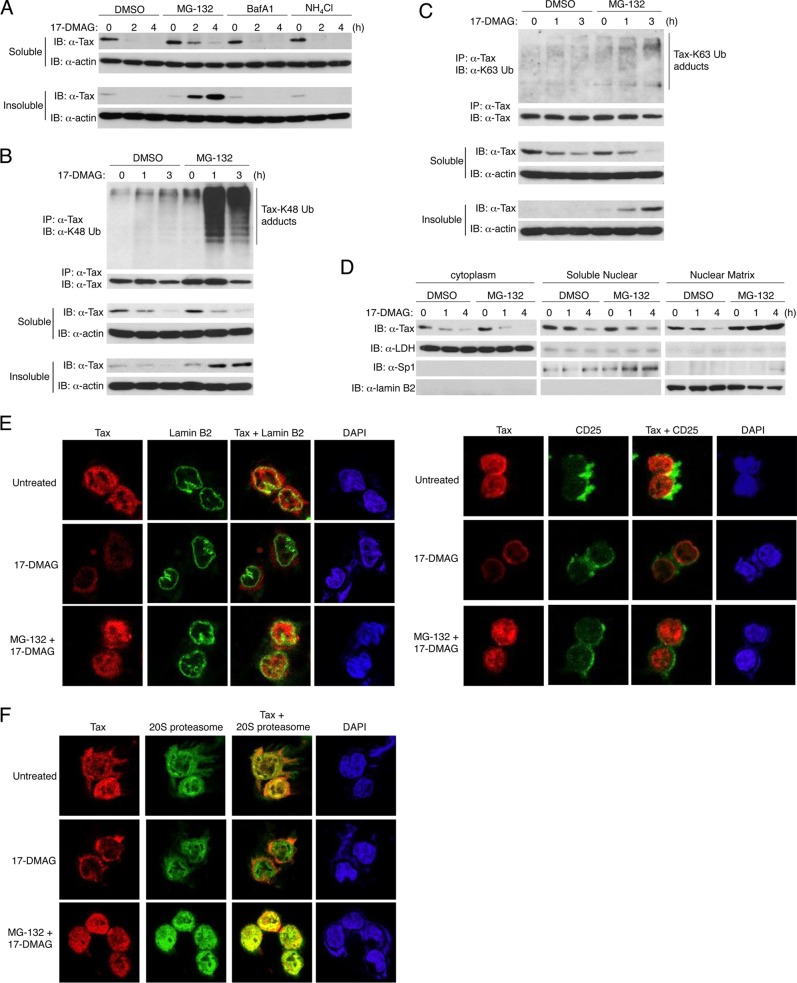Fig 3.
HSP90 inhibition induces Tax proteasomal degradation in the nuclear matrix. (A) C8166 cells were treated with 17-DMAG (0.5 μM) and either DMSO, MG-132 (20 μM), bafilomycin A1 (BafA1; 10 nM), or ammonium chloride (NH4Cl; 20 μM) as indicated. Cells were lysed and partitioned into soluble and insoluble fractions and resolved by SDS-PAGE, and immunoblotting was performed with anti-Tax and antiactin. (B, C) C8166 cells were treated with 17-DMAG (0.5 μM) and MG-132 (20 μM) as indicated, soluble and insoluble cell lysates were immunoprecipitated with anti-Tax, and immunoblotting was performed with anti-K48 Ub (B), anti-K63 Ub (C), and anti-Tax. Lysates were also subjected to immunoblotting with anti-Tax and antiactin. (D) C8166 cells were treated with 17-DMAG (0.5 μM) and either DMSO or MG-132 (20 μM) as indicated, followed by fractionation into cytoplasmic, soluble nuclear, and nuclear matrix fractions. Immunoblotting was conducted with anti-Tax, anti-LDH, anti-Sp1, and anti-lamin B2. (E) C8166 cells were treated with 17-DMAG (0.5 μM) and MG-132 (20 μM) for 4 h as indicated and stained with DAPI, anti-Tax (red), anti-lamin B2 (left panel; green), and anti-CD25 (right panel; green). (F) C8166 cells were treated with 17-DMAG (0.5 μM) and MG-132 (20 μM) for 4 h as indicated and stained with DAPI, anti-Tax (red), and anti-20S proteasome (green).

